Void: The Strange Physics of NothingJames Owen Weatherall The rising star author of The Physics of Wall Street explores why “nothing” may hold the key to the next era of theoretical physics
James Owen Weatherall’s previous book, The Physics of Wall Street, was a New York Times best-seller and named one of Physics Today’s five most intriguing books of 2013. In his newest volume, he takes on a fundamental concept of modern physics: nothing. The physics of stuff—protons, neutrons, electrons, and even quarks and gluons—is at least somewhat familiar to most of us. But what about the physics of nothing? Isaac Newton thought of empty space as nothingness extended in all directions, a kind of theater in which physics could unfold. But both quantum theory and relativity tell us that Newton’s picture can’t be right. Nothing, it turns out, is an awful lot like something, with a structure and properties every bit as complex and mysterious as matter. In his signature lively prose, Weatherall explores the very nature of empty space—and solidifies his reputation as a science writer to watch. The Cosmic Web: Mysterious Architecture of the UniverseJ. Richard Gott A gripping first-person account of how scientists came to understand our universe's mysterious structure
J. Richard Gott was among the first cosmologists to propose that the structure of our universe is like a sponge made up of clusters of galaxies intricately connected by filaments of galaxies―a magnificent structure now called the "cosmic web" and mapped extensively by teams of astronomers. Here is his gripping insider's account of how a generation of undaunted theorists and observers solved the mystery of the architecture of our cosmos.
The Cosmic Web begins with modern pioneers of extragalactic astronomy, such as Edwin Hubble and Fritz Zwicky. It goes on to describe how, during the Cold War, the American school of cosmology favored a model of the universe where galaxies resided in isolated clusters, whereas the Soviet school favored a honeycomb pattern of galaxies punctuated by giant, isolated voids. Gott tells the stories of how his own path to a solution began with a high-school science project when he was eighteen, and how he and astronomer Mario Jurič measured the Sloan Great Wall of Galaxies, a filament of galaxies that, at 1.37 billion light-years in length, is one of the largest structures in the universe.
Drawing on Gott’s own experiences working at the frontiers of science with many of today’s leading cosmologists, The Cosmic Web shows how ambitious telescope surveys such as the Sloan Digital Sky Survey are transforming our understanding of the cosmos, and how the cosmic web holds vital clues to the origins of the universe and the next trillion years that lie ahead. Particle Physics Brick by Brick: Atomic and Subatomic Physics Explained... in LEGODr. Ben Still PhD A simple and entertaining introduction to the building blocks of the universe.
In 2014 the Lego® Group sold 62 billion Lego® pieces. That's 102 Lego® bricks for every person in the world. That's nothing however to the estimated seven billion billion billion atoms that make up each of us, let alone the between ten quadrillion vigintillion and one-hundred thousand quadrillion vigintillion atoms in the known observable universe.
Thankfully, understanding atomic and subatomic physics need not be infathomable. Lego® bricks are a great way to visualize the blueprint of the Universe, right down to its smallest elements.
Particle Physics Brick by Brick explains how and with what the universe came to be. It introduces the Standard Model of Physics, the "rule book" of physics which has been proven correct again and again since its mid-20 century development. Today, it is the gaps in the model that keep physicists busy.
In concise chapters, the book assigns to each atomic element a colored Lego® brick, such as neutrons, leptons, and quarks. By assembling actual or imaginary bricks and observing their relationships and interactions, particle physics becomes clear. The book opens with the Standard Model of Physics, the physicists and the discoveries made over history, and directions on how to use the book.
The chapters that follow are:
Building Blocks and Construction RulesBuilding a UniverseElectromagnetism and QED (Quantum ElectroDynamics)The Strong Force and QCD (Quantum ChromoDynamics)The Weak Force and Breaking SymmetriesBroken Symmetry and MassProblems with GhostsViolated SymmetryThe Future.
Particle Physics Brick by Brick is a succinct introduction for anyone that wants to gain a basic understanding of the atomic world, its elements and how they interact. By using tangible substitutes — bricks — it brings the unseen atomic world into the realm of the visual. The Fifth Season (The Broken Earth (1))N. K. Jemisin At the end of the world, a woman must hide her secret power and find her kidnapped daughter in this "intricate and extraordinary" Hugo Award winning novel of power, oppression, and revolution. (The New York Times)
This is the way the world ends...for the last time.
It starts with the great red rift across the heart of the world's sole continent, spewing ash that blots out the sun. It starts with death, with a murdered son and a missing daughter. It starts with betrayal, and long dormant wounds rising up to fester.
This is the Stillness, a land long familiar with catastrophe, where the power of the earth is wielded as a weapon. And where there is no mercy.
Read the first book in the critically acclaimed, three-time Hugo award-winning trilogy by NYT bestselling author N. K. Jemisin.
For more from N. K. Jemisin, check out:
The Inheritance Trilogy
The Hundred Thousand Kingdoms
The Broken Kingdoms
The Kingdom of Gods
The Inheritance Trilogy (omnibus edition)
Shades in Shadow: An Inheritance Triptych (e-only short fiction)
The Awakened Kingdom (e-only novella)
Dreamblood Duology
The Killing Moon
The Shadowed Sun
The Broken EarthThe Fifth SeasonThe Obelisk Gate Life on Mars: What to Know Before We GoDavid A. Weintraub The story of the search for life on Mars―and the moral issues confronting us as we prepare to send humans there
Does life exist on Mars? The question has captivated humans for centuries, but today it has taken on new urgency. NASA plans to send astronauts to Mars orbit by the 2030s. SpaceX wants to go by 2024, while Mars One wants to land a permanent settlement there in 2032. As we gear up for missions like these, we have a responsibility to think deeply about what kinds of life may already inhabit the planet—and whether we have the right to invite ourselves in. This book tells the complete story of the quest to answer one of the most tantalizing questions in astronomy. But it is more than a history. Life on Mars explains what we need to know before we go.
David Weintraub tells why, of all the celestial bodies in our solar system, Mars has beckoned to us the most. He traces how our ideas about life on Mars have been refined by landers and rovers, terrestrial and Mars-orbiting telescopes, spectroscopy, and even a Martian meteorite. He explores how finding DNA-based life on the Red Planet could offer clues about our distant evolutionary past, and grapples with the profound moral and ethical questions confronting us as we prepare to introduce an unpredictable new life form―ourselves―into the Martian biosphere.
Life on Mars is also a book about how science is done―and undone―in the age of mass media. It shows how Mars mania has obscured our vision since we first turned our sights on the planet and encourages a healthy skepticism toward the media hype surrounding Mars as humanity prepares to venture forth. Quantum Space: Loop Quantum Gravity and the Search for the Structure of Space, Time, and the UniverseJim Baggott Today we are blessed with two extraordinarily successful theories of physics. The first is Albert Einstein's general theory of relativity, which describes the large-scale behaviour of matter in a curved spacetime. This theory is the basis for the standard model of big bang cosmology. The discovery of gravitational waves at the LIGO observatory in the US (and then Virgo, in Italy) is only the most recent of this theory's many triumphs.
The second is quantum mechanics. This theory describes the properties and behaviour of matter and radiation at their smallest scales. It is the basis for the standard model of particle physics, which builds up all the visible constituents of the universe out of collections of quarks, electrons and force-carrying particles such as photons. The discovery of the Higgs boson at CERN in Geneva is only the most recent of this theory's many triumphs.
But, while they are both highly successful, these two structures leave a lot of important questions unanswered. They are also based on two different interpretations of space and time, and are therefore fundamentally incompatible. We have two descriptions but, as far as we know, we've only ever had one universe. What we need is a quantum theory of gravity.
Approaches to formulating such a theory have primarily followed two paths. One leads to String Theory, which has for long been fashionable, and about which much has been written. But String Theory has become mired in problems. In this book, Jim Baggott describes "the road less travelled": an approach which takes relativity as its starting point, and leads to a structure called Loop Quantum Gravity. Baggott tells the story through the careers and pioneering work of two of the theory's most prominent contributors, Lee Smolin and Carlo Rovelli. Combining clear discussions of both quantum theory and general relativity, this book offers one of the first efforts to explain the new quantum theory of space and time. | Surfing the Quantum WorldFrank S. Levin The ideas and phenomena of the quantum world are strikingly unlike those encountered in our visual world. Surfing the Quantum World shows why and how this is so. It does this via a historical review and a gentle introduction to the fundamental principles of quantum theory, whose core concepts and symbolic representations are used to explain not only "ordinary" microscopic phenomena like the properties of the hydrogen atom and the structure of the Periodic Table of the Elements, but also a variety of mind-bending phenomena. Readers will learn that particles such as electrons and photons can behave like waves, allowing them to be in two places simultaneously, why white dwarf and neutron stars are gigantic quantum objects, how the maximum height of mountains has a quantum basis, and why quantum objects can tunnel through seemingly impenetrable barriers. Included among the various interpretational issues addressed is whether Schrödinger's cat is ever both dead and alive. The Physics of Everyday Things: The Extraordinary Science Behind an Ordinary DayJames Kakalios Physics professor, bestselling author, and dynamic storyteller James Kakalios reveals the mind-bending science behind the seemingly basic things that keep our daily lives running, from our smart phones and digital “clouds” to x-ray machines and hybrid vehicles.
Most of us are clueless when it comes to the physics that makes our modern world so convenient. What’s the simple science behind motion sensors, touch screens, and toasters? How do we glide through tolls using an E-Z Pass, or find our way to new places using GPS? In The Physics of Everyday Things, James Kakalios takes us on an amazing journey into the subatomic marvels that underlie so much of what we use and take for granted.
Breaking down the world of things into a single day, Kakalios engages our curiosity about how our refrigerators keep food cool, how a plane manages to remain airborne, and how our wrist fitness monitors keep track of our steps. Each explanation is coupled with a story revealing the interplay of the astonishing invisible forces that surround us. Through this “narrative physics,” The Physics of Everyday Things demonstrates that—far from the abstractions conjured by terms like the Higgs Boson, black holes, and gravity waves—sophisticated science is also quite practical. With his signature clarity and inventiveness, Kakalios ignites our imaginations and enthralls us with the principles that make up our lives. Before Time Began: The Big Bang and the Emerging UniverseHelmut Satz What is the origin of the universe? What was there before the universe appeared? We are currently witnessing a second Copernican revolution: neither our Earth and Sun, nor our galaxy, nor even our universe, are the end of all things. Beyond our world, in an endless multiverse, are innumerable other universes, coming and going, like ours or different.
Fourteen billion years ago, one of the many bubbles constantly appearing and vanishing in the multiverse exploded to form our universe. The energy liberated in the explosion provided the basis for all the matter our universe now contains. But how could this hot, primordial plasma eventually produce the complex structure of our present world? Does not order eventually always lead to disorder, to an increase of entropy? Modern cosmology is beginning to find out how it all came about and where it all might lead. Before Time Began tells that story. The Origin of Mass: Elementary Particles and Fundamental SymmetriesJohn Iliopoulos The discovery of a new elementary particle at the Large Hadron Collider at CERN in 2012 made headlines in world media. Since we already know of a large number of elementary particles, why did this latest discovery generate so much excitement? This small book reveals that this particle provides the key to understanding one of the most extraordinary phenomena which occurred in the early Universe. It introduces the mechanism that made possible, within tiny fractions
of a second after the Big Bang, the generation of massive particles.
The Origin of Mass is a guided tour of cosmic evolution, from the Big Bang to the elementary particles we study in our accelerators today. The guiding principle of this book is a concept of symmetry which, in a profound and fascinating way, seems to determine the structure of the Universe. A Big Bang in a Little Room: The Quest to Create New UniversesZeeya Merali An award-winning science writer takes us into the lab to answer some of life's biggest questions: How was the universe created? And could we create our own?
What if you could become God, with the ability to build a whole new universe? As startling as it sounds, modern physics suggests that within the next two decades, scientists may be able to perform this seemingly divine feat-to concoct an entirely new baby universe, complete with its own physical laws, star systems, galaxies, and even intelligent life. A Big Bang in a Little Room takes the reader on a journey through the history of cosmology and unravels-particle by particle, theory by theory, and experiment by experiment-the ideas behind this provocative claim made by some of the most respected physicists alive today. Beyond simply explaining the science, A Big Bang in a Little Room also tells the story of the people who have been laboring for more than thirty years to make this seemingly impossible dream a reality. What has driven them to continue on what would seem, at first glance, to be a quixotic quest?
This mind-boggling book reveals that we can nurse other worlds in the tiny confines of a lab, raising a daunting prospect: Was our universe, too, brought into existence by a daring creator? The Cosmic Machine: The Science That Runs Our Universe and the Story Behind ItScott Bembenek Amazon #1 Best Seller
“It's very useful to have a unified overview of what we know, collected and recounted in one place. The Cosmic Machine will introduce you to the basic principles by which today's physicists organize the world." –Sean Carroll, author of The Big Picture: On the Origins of Life, Meaning, and the Universe Itself
“A superb resource for science fans or those struggling to understand the subject; an impressive fit in an age of Bill Nye and Neil deGrasse Tyson web videos.” –Kirkus Reviews
“The Cosmic Machine succeeds on all accounts.” –Midwest Book Review
Energy, Entropy, Atoms, and Quantum Mechanics form the very foundation of our universe. But how do they govern the world we live in? What was the difficult path to their discovery? Who were the key players that struggled to shape our current understanding?
The Cosmic Machine takes you from the earliest scientific inquiries in human history on an exciting journey in search of the answers to these questions. In telling this fascinating story of science, the reader is masterfully guided through the wonderment of how scientific discoveries (and the key players of those discoveries) shaped the world as we know it today.
With its unique blend of science, history, and biographies, The Cosmic Machine provides an easily accessible account without sacrificing the actual science itself. Not only will this book engage, enlighten, and entertain you, it will inspire your passion and curiosity for the world around us. |
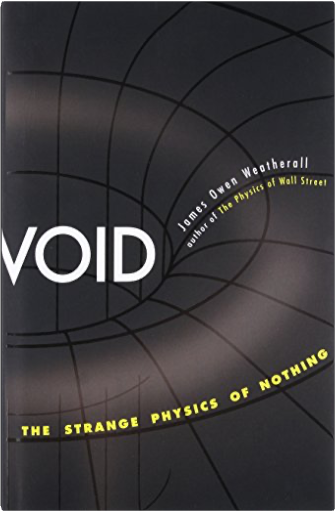
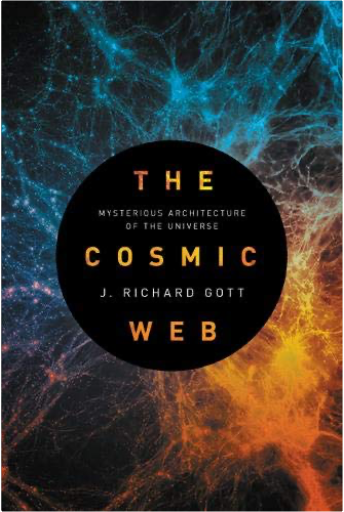
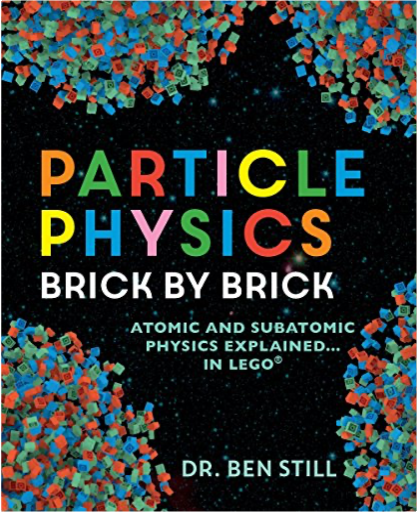
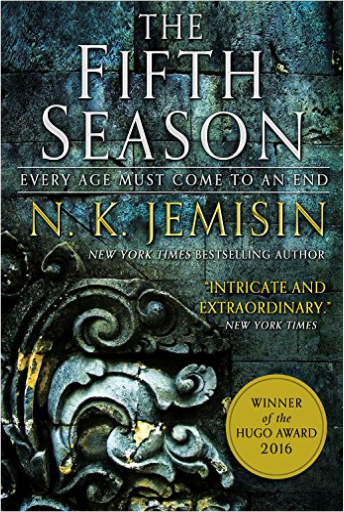
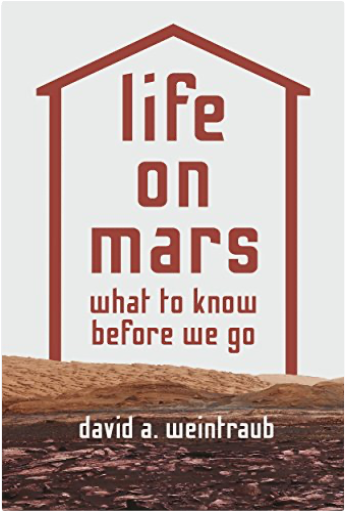
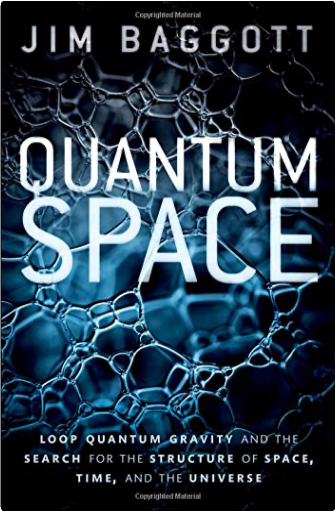
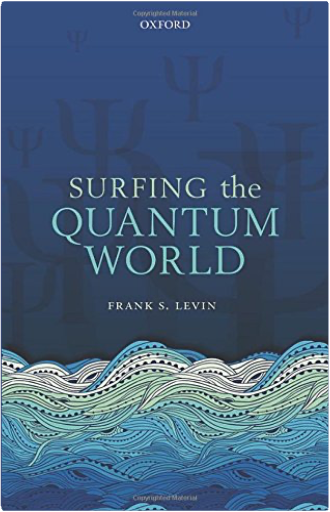
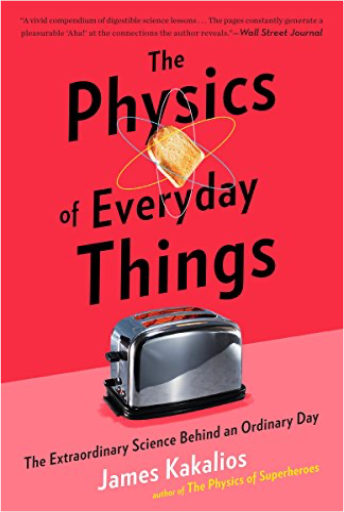
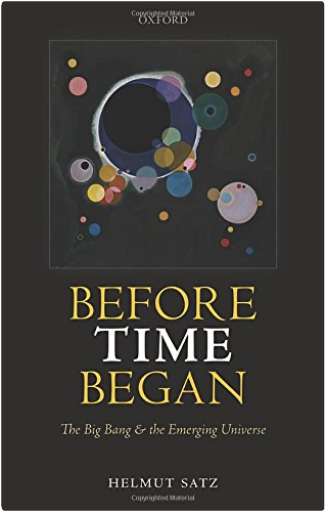
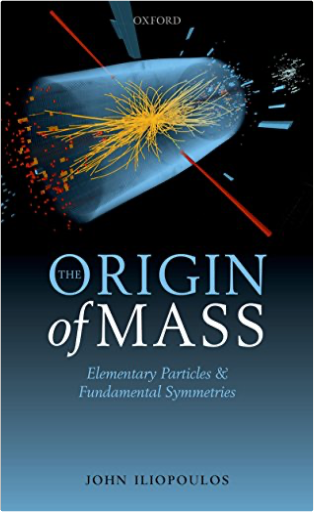
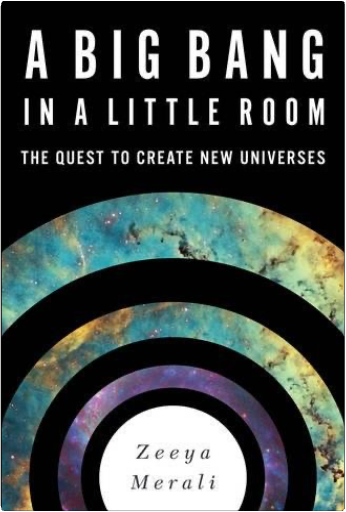
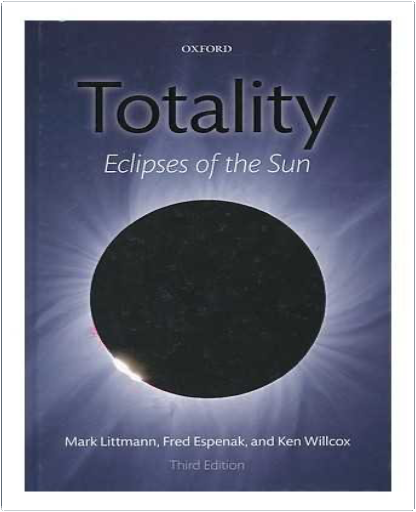
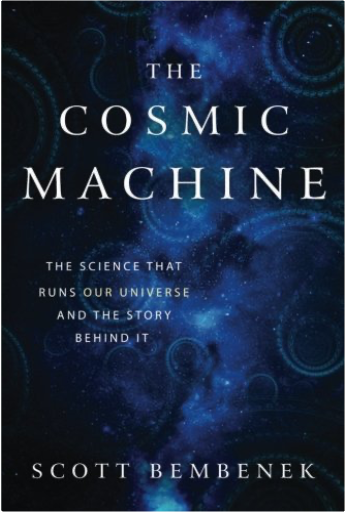



 Made with Delicious Library
Made with Delicious Library